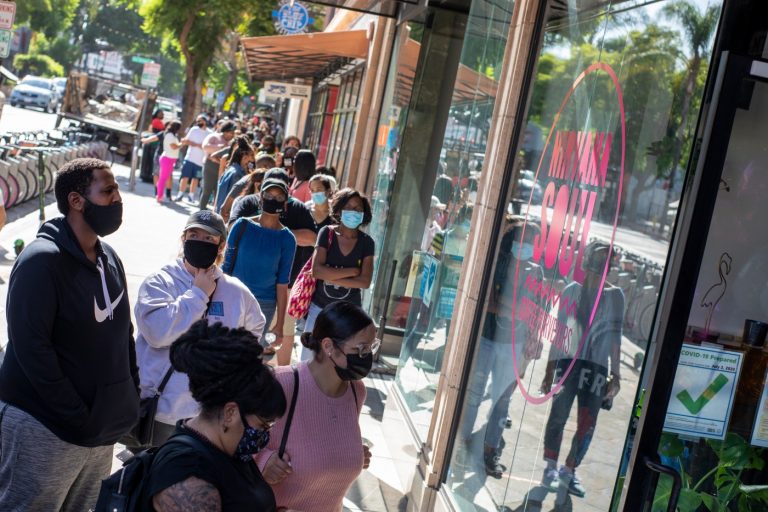A friend of mine responded to an ad on Facebook for Bombas socks at a price that was too good to be true. It wasn’t true, and she never got the socks she ordered. Some ads that claim to offer a great price for a name-brand product might instead send you a cheap knock-off.
In theory, Facebook vets its ads, but from what I’ve seen, quite a few scammers are able to advertise name brand products that they can’t possibly deliver at that price. A 2023 post by Fox News’ Cyberguy pointed to numerous illegitimate Facebook Marketplace ads, including a Canon EOS Rebel T7 camera with an extra telephoto lens for $19.99 that sells on Amazon for $479 without the telephoto lens. And then there’s an HP Laptop for $23 if you buy it “Today Only.”
Facebook does have rules against scams, but unscrupulous merchants have found ways to get around them.
Amazon’s merchant network
You would expect Amazon to only sell legitimate products, but Amazon is more than just a single seller. Although some things are sold directly by Amazon, many products are from third-party merchants. If you look carefully, you may see a “sold by” and “ships from” on the product page. If it’s not Amazon, you can click on the seller’s name to learn more about them, including a summary of user reviews.
If the product comes from a third-party seller, you may or may not be able to take advantage of Amazon’s return policy, so look for “free returns” below the product’s price on the Amazon page.
I do sometimes buy off-brand bargain products on Amazon, but in addition to looking at the reviews, I also make sure it’s returnable. It’s not uncommon to find cheap off-brand electronics on Amazon that work well, despite their low price, although one never knows for sure. I once bought a bargain USB flash drive only to find out that it didn’t work. Fortunately, Amazon took it back and refunded my money. On the other hand, I recently bought a very inexpensive label printer and some cheap earbuds that work just fine.
Happy returns
Related Articles
Magid: Tech can sometimes be too complicated
Magid: Satisfying my obsession with label makers
Magid: Mixed feelings about bill to limit smartphones in school
Magid: How to type faster on a smartphone
Magid: Keeping cool with AC, evaporative coolers, fans and an app
In most cases, Amazon lets you return items within 30 days, but make sure it is returnable before you buy it. I have taken them up on that return policy on occasion, after trying out the product and determining that it wasn’t as good as advertised. Some other online merchants, including Walmart, offer up to 90 days to return items. Products bought at Walmart.com, Target.com or Costco.com can be returned to their stores. Amazon usually lets you take returns to Whole Foods, Kohls, Staples or UPS, but it varies by product . You won’t know for sure until you go through the online return process.
If you do buy returnable products, make sure you try them out during the return period and hang on to the packaging until you’re sure all is well. If something goes wrong after the return period, call up the merchant to see if they’ll make an exception. I bought a coffee maker on Amazon, which broke after about 4 months. I tried to make a warranty claim, but the company went out of business. When I explained that to Amazon’s telephone support person, she authorized me to return it even though it was well past their return window.
Avoid phishing
Be especially careful about any offers you get via email, text or a direct message on social media, especially if you don’t recognize the seller. If I see an offer that looks credible, I’ll compare their price with what I can find on Amazon. Sometimes it’s lower on Amazon, but if the merchant is much lower, then there is reason to question the legitimacy.
Research the seller
If you’re tempted to purchase something from a seller other than a well-known e-tailer, do some research before you order. Go to their website and look for a physical address, phone number, and email address and consider calling or sending an email to see if they respond. Look for reviews on independent sites, but be skeptical of any reviews you see on their site. Don’t base your buying decision on one or two reviews — you’ll almost always find extremely positive and negative ones, but read multiple reviews to get a sense of what people think about both the product and the seller.
If you plan to enter your credit card and other personal information on the site, look for HTTPS in the browser address bar, which indicates a secure connection. You should also see a padlock icon next to the URL in your browser
Only pay by credit card, debit card or a reputable payment service like Paypal, Google Pay or Apple Pay. Never send cash or wire money, and definitely don’t pay with gift cards. If you think you’re a victim of fraud or you were sent nothing or an item that was clearly not what was promised, contact your bank, credit card company or payment service. Credit card companies are required to “charge back” the amount and investigate your claim. It may be a little trickier with debit cards issued by your bank, but you still have a level of protection.
Most of all, employ some critical thinking skills. When in doubt, pause, rethink or talk about it with someone you trust. And remember, if something seems “too good to be true,” it’s probably false.
Larry Magid is a tech journalist and internet safety activist. Contact him at larry@larrymagid.com.












